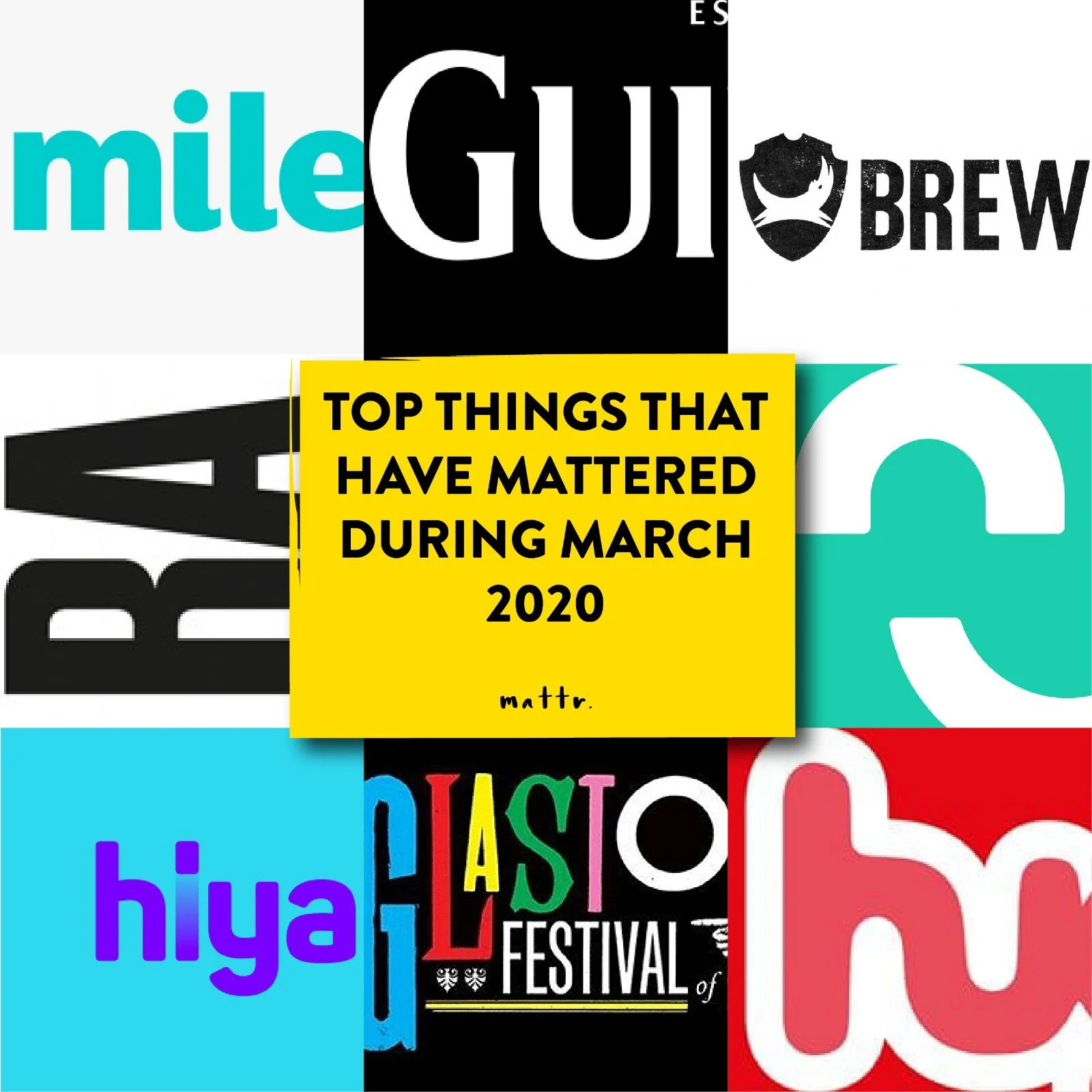We write our monthly roundups in order to inspire a conversation around creativity, brand purpose, and the positive impact we can have on society.
In the event of covid-19, the global pandemic that’s affected our lives so unpredictably, it’s important to celebrate the incredible efforts by brands out there supporting our health services and communities, as well as helping us be entertained during our collective effort staying at home.
So behold our roundup of brands offering their purposes for good during covid-19:
Help Hiyacar offer free rides NHS workers
With essential travel coming to a standstill across London and elsewhere in the country - the good eggs at Hiyacar are now offering free car hires to NHS workers* to help them get around to hospitals and home at the end of a shift. Let’s help them spread the word about this to offer to the NHS across socials!
*dependent on ID and insurance of course!
Guinness’s content for St Patrick’s Day
This Covid-19 situation is an opportunity for brands to re-think about the way they’re talking to their audiences right now. A great example we found of this was this film by Guinness to celebrate St Patrick’s Day this year.
They’re encouraging their audience to celebrate as normal, and foster their incredible spirit but from the comfort of their homes. It’s a fantastic use of their platform for good karma right now :)
(we actually did a deep dive into how to create great content like this combining UGC, previous assets and great stock here)
Brewdog and their hand sanitiser initiative
Brewdog have offered their distillery in Aberdeen to assist in the production and distribution of Punk Sanitiser. They’re still making beer, but diverted the majority of their stock to produce hand sanitiser, and as of this week have now distributed 50,000 units to NHS hospitals and local charities across the UK.
Deliveries and stock are being handled by extra team members from some of Brewdog’s closed bars - because “united we stand for better beer!”
The Royal Academy of Art and their #RAdailydoodle
Galleries across the world are closed (and yet a Van Gogh painting was stolen in Amsterdam?!) but the Royal Academy of Art wants to make sure art is still accessible to everyone at home.
So they’ve set up a daily drawing competition on Twitter, giving a daily challenge of different household items to get people drawing and be more creative! It started with legs of ham, but they’ve gone on to wardrobes and even workspaces… it’s a great way to engage people far and wide to be artistic, plus there’s some fun and witty commentary from their social media team on the masterpieces submitted :)
Chip’s new saving techniques to help us during this pandemic
With so much uncertainty in the air it’s expected that many people will now be turning to their savings, or looking at how much they can save while the brands and business around us is getting used to a new normal.
Chip saw a massive increase in usage from the first week in March as people turned to their accounts to check on their affairs. And after such a spike, they’ve now introduced new saving techniques to help us during covid-19. They’ve raised their saving limit to £10K, and even introduced a new personal algorithm that can help increase saving according to your income level… just doing the most to help people where they can at the moment using the tech available.
First Mile offering their services to deliver crucial goods to hospitals
I think we might have mentioned this before but we’re huge fans/users of First Mile in this office, they’re a brand doing great things for our environment and our wastage.
And for the duration of covid-19, they’re offering their extra drivers and fleet available to deliver leftover food and wellbeing items from closing offices around London to the doctors and nurses at the UCLH.
So if you know of any closing offices, like co-working spaces or even private offices who have perishables, or even cleaning items/sanitary items - let them know and they’ll be delivered to our frontline NHS medical staff!
Glastonbury’s donation of festival supplies to hospitals in the South West
The iconic festival would have celebrated 50 years this year, but for good reasons and to protect everyone’s safety it’s putting off the entire celebration to next year - but we’re not here to have a moan about how hard it is to get tickets!
There’s plenty of tributes and the BBC is setting up an entire digital Glastonbury experience to make up for it, but we wanted to highlight how the Eavis family have donated their entire medical supplies including masks, gloves, sanitiser and more intended for use in June, plus dedicated food provisions already in place, to hospitals across the Somerset county and South West. It’s awesome and will be a huge help to guaranteeing supplies across the South.
Huggg open up e-vouchers to schools to help feed families
And last but definitely not least, we wanted to highlight what e-voucher start-up Huggg is doing to help in this crisis. They’re usually used for gifting, or even as an HR perk rewarding employees, but mainly stayed in the B2B sector.
Now they’re opening up their platform to be used by schools to send vouchers to parents and families who rely on free school meals - and these vouchers can be used in supermarkets to redeem the equivalent food necessary to keep kids fed. As of this week it’s also open to charities too - to enable people in isolation to send supermarket vouchers to volunteers to collect groceries.
Their CEO Paul Wickers told the team that "it's been such a privilege to be able to put our resources to work on this important problem. We have our first schools up and running and are happy to open it up to any other schools and trusts looking for a solution while a central one is fixed. We're waiving all platform fees, schools will simply pay for the vouchers that get used and claim it back from the DoE."
If you’ve seen any brands who are doing great things to help us all get through this difficult time, then let us know!
In the words of the NHS: Stay Home and Save Lives. Stay safe everyone x









